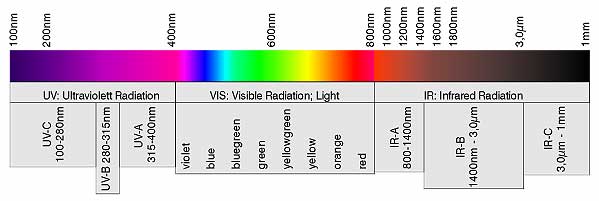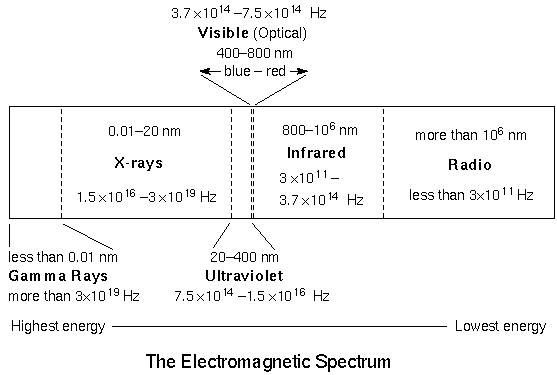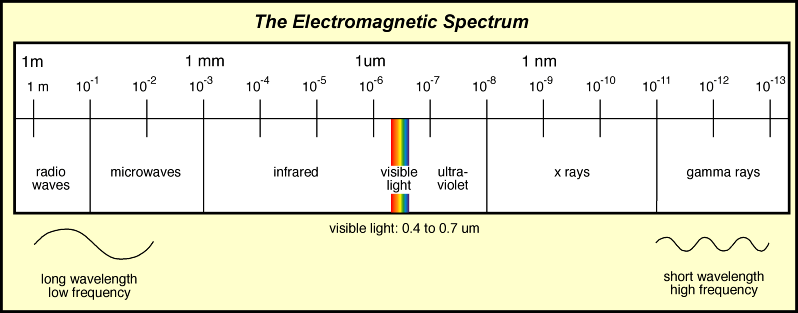All of these known collectively as the electromagnetic spectrum are fundamentally similar in that they move at.
Similarities between visible light infrared and ultraviolet.
The optical radiation range is composed in order of increasing energy of infrared visible and ultraviolet radiation.
Light is a form of electromagnetic radiation.
We would like to show you a description here but the site won t allow us.
The optical radiation range is located between microwave radiation and x rays.
Infrared radiation is just a longer wavelength of light than visible light.
The differences between these 2 lights give them different applications.
The key difference between infrared and ultraviolet radiation is that the wavelength of infrared radiation is longer than that of visible light whereas the wavelength of ultraviolet radiation is shorter than the wavelength of visible light.
The sun s lower atmosphere chromosphere shows up especially well in this uv.
Infrared on the other hand is invisible to the human eye and exists just beyond the visible spectrum.
They are both electromagnetic radiation and or photons.
The electromagnetic spectrum spans many orders of magnitude in energy and correspondingly in frequency and wavelength.
As nouns the difference between infrared and ultraviolet is that infrared is electromagnetic radiation of a wavelength longer than visible light but shorter than microwave radiation having a wavelength between 700 nm and 1 mm while ultraviolet is ultraviolet colour.
Other forms of electromagnetic radiation include radio waves microwaves infrared radiation ultraviolet rays x rays and gamma rays.
The image on the left shows the sun in visible light.
Several sunspots dot the face of the sun.
These two images of the sun were taken at nearly the same time on february 3 2002.
Visible light is the portion of the electromagnetic spectrum that can be seen with the naked eye.
Infrared and ultraviolet radiation are two types of electromagnetic radiation this means these radiation waves have an electric field and a magnetic.
Visible light falls between the wavelengths of infrared and ultraviolet.
Other than that the only difference is our ability to see it with our eyes.
The image on the right shows the sun in ultraviolet uv light at a wavelength of 30 4 nanometers 304 ångstroms.

























